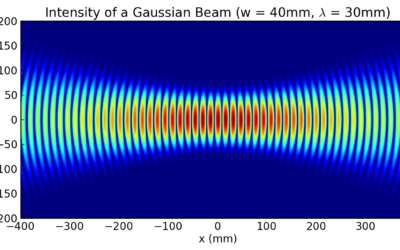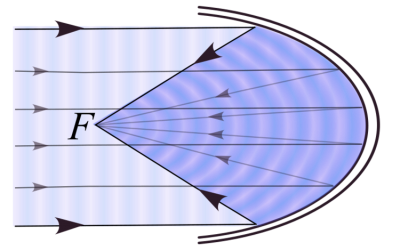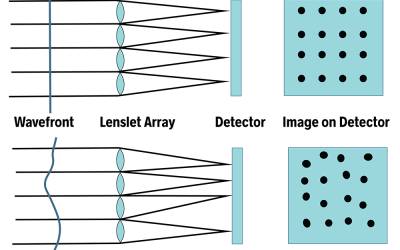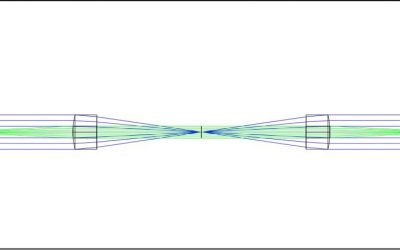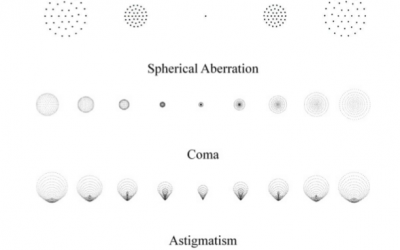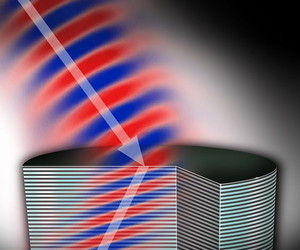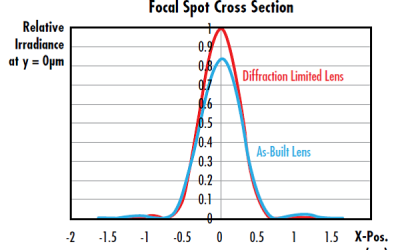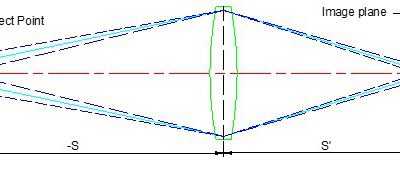Introduction The Scheimpflug principle is a fundamental concept in optics, particularly in the realm of photography and imaging. Named after its inventor Theodor Scheimpflug, this principle provides a systematic approach to achieving extended depth of field in...
optics definitions
Dispersive Prism
by Victor Argueta | FAQ, OFH, optical design, optics, optics definitions
A dispersive prism is an optical element used to break up light into its different wavelength components - a phenomenon discovered by Sir Isaac Newton. By doing this, the prism separates light of varying wavelengths, with longer wavelengths (red) deflecting at a...
3 Rules For Plano Convex Lens Design
by Victor Argueta | lens design, OFH, optical design, optics, optics definitions
Plano convex lenses are lenses with a positive focal length and while they are simple compared to many optical systems, but there are fine details that a lens designer needs to pay attention to. This post will review 3 key rules for designing a plano convex lens
Laser Beam Caustic: Explained
by Victor Argueta | FAQ, illumination, optics definitions, Uncategorized
One parameter that can be used to evaluate the quality of a laser beam is what's called a Beam Caustic. A caustic, in general, is an “envelope” that defines the extent of a beam of light after they have been refracted (or reflected ) by a curved surface. As the...
Understanding Rayleigh Range: Key to Laser Beam Propagation
by Victor Argueta | FAQ, optics definitions
Introduction When working with lasers it is important to understand the physical parameters that define system performance. While some of these specifications may be readily recognizable, such as wavelength and divergence, others may be lesser-known, yet...
Parabolic Mirror Design
by Victor Argueta | FAQ, optical design, optical engineering, optics definitions
Parabolic mirrors are optical systems that are used to collect or distribute energy. They have a wide range of applications from solar collectors for water heating systems to microscopes and telescopes, and everyday flashlights. The most common way ...
Apochromatic Lens Design
by Victor Argueta | FAQ, lens design, lens design consulting, optical design, optics definitions
In an achromatic lens design, we optimize such that two wavelengths, usually red (590nm) and blue (495nm), focus on the same image plane. This is done to reduce chromatic aberration. In this article, we’ll talk about a similar design type called an Apochromatic lens...
Understanding Free Space Optical Communication Design
by Victor Argueta | FAQ, optical design, optics definitions
A previous post discussed underwater optical design. This week, we will review the diametrical opposite application - free-space optical communication (FSO). As with underwater optical design, one of the challenges facing FSO is the optical signal propagation...
What is Birefringence?
by Victor Argueta | FAQ, optics, optics definitions, science
In a previous post, we explained the concept of a material refractive index in optics in the context of optical design. Something that we didn’t review however is that many materials have two, three (and even more) different refractive indices depending on the...
Understanding RMS Wavefront Error: An In-Depth Exploration | OFH
by Victor Argueta | optical design, optics, optics definitions, Zemax
Introduction to RMS Wavefront Error As mentioned in several articles in this blog, aberrations are of great relevance when designing an optical system. The objective being to design a system that creates a “good image”. However, there are different metrics to...
Light Source Safety Calculator
by Victor Argueta | illumination, OFH, optics definitions
One important aspect of any design is user safety. This is especially important when using light sources like lasers and LEDs that may be observed by the naked eye. Disregarding safety can lead to product recalls, lawsuits, and harm to users. To protect users, a...
Deciphering 4f Optical Systems: A Journey into Fourier Optics
by Victor Argueta | lens design consulting, OFH, optics, optics definitions
Introduction A 4F optical system is a system architecture that uses Fourier Optics. In this article, we will explain why we need them and how to design a simple 4f correlator. We will leave out most of the mathematical derivations, but if you are interested...
Mastering Spot Diagrams: Analyzing Optical System Quality | OFH
by Victor Argueta | FAQ, lens design, optical engineering, optics definitions
Introduction to Spot Diagrams As optical engineers, we use different tools and techniques to evaluate the performance of an optical design when simulating the system in a ray tracing program. One of those tools are spot diagrams. They may be a little bit confusing to...
Designing optical systems with hot and cold mirrors
by Victor Argueta | optical engineering, optics definitions, science
Filters for selecting specific wavelengths are common in optical systems. In our microscope design article we explained the use of dichroic mirrors to select fluorescent wavelengths. In some applications optical engineers need to filter out high (UV light) or lower...
5 things to know about refractive index
by Victor Argueta | FAQ, optics, optics definitions
Introduction The refractive index is one of the basic concepts in optical sciences. Same as volume, and density, the refractive index is a fundamental property of all materials. However, not only materials that are used in optics have a refractive index. For example,...
Types of Optical Prisms
by Victor Argueta | mechanical design, optical design, optics, optics definitions
One of the most famous images in the history of optics is that of Sir Isaac Newton with a beam of white light going through a glass prism and a rainbow coming out the other side. It is one of the most famous optical experiments, not only for its simplicity, but also...
Understanding Strehl Ratio in Optical Systems | OFH
by John | optics definitions
Understanding Strehl Ratio: A Practical Overview The Strehl ratio stands as a fundamental metric in optical engineering, providing a concise measure of the quality of an optical system in comparison to an ideal, aberration-free counterpart. This practical overview...
Understanding image depth of field
by John | optics definitions
Depth of field is a distance range where the image optical resolution is as high as possible for that lens, i.e. an image appears to be in focus. When starting a lens design program, having a good understanding of this parameter’s physics will help you and your...
Mastering Optical Invariants: Key Principles in Optical System Design
by VasiliKarneichyk | optics definitions
Introduction Optical invariants serve as invaluable mathematical representations encapsulating various optical parameters within an optical system. Despite the dynamic nature of optical components, these invariants remain constant, providing a stable foundation amidst...



